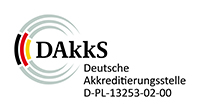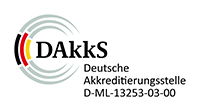AG Seifert
Group Leader: Prof. Dr. Harald Seifert
[Email protection active, please enable JavaScript.]
Selected recent publications (2015 - date) (Acinetobacter baumannii)
Selected recent publications (2015 - date) (Staphylococcus aureus)
Selected recent publication (2015 - date) (other)
Co-operation partners at IMMIH
Dr. Paul G. Higgins (-32011/32231/32212, [Email protection active, please enable JavaScript.])
Vivien Persy, Technician (-32231, [Email protection active, please enable JavaScript.])
Dr. David Tobys ([Email protection active, please enable JavaScript.])
Julia Wille, Technician (-32211/ 32231, [Email protection active, please enable JavaScript.])
Dr. rer. nat. Kyriaki Xanthopoulou (-32231, [Email protection active, please enable JavaScript.])
Main Research Topics:
Acinetobacter baumannii and Staphylococcus aureus
Acinetobacter
Acinetobacter baumannii is a serious and emerging nosocomial pathogen. The organism is characterised by its innate and acquired antimicrobial resistance, a propensity to cause outbreaks, an ability to survive desiccation (unlike most other Gram-negative organisms) and its survival on inanimate surfaces. These characteristics mean that once established in a hospital, A. baumannii is difficult to eradicate. A. baumannii is often grouped together with the closely-related Acinetobacter species A. nosocomialis, A. pittii, A. dijkshoornii and A. seifertii. They are collectively termed the Acinetobacter baumannii group.
Our interest in the Acinetobacter baumannii group is centred on identification and speciation, epidemiology, antimicrobial susceptibility, and resistance mechanisms.
(i) For the investigation of Acinetobacter baumannii group epidemicity and transmission we evaluated and further developed molecular methods such as pulsed-field gel electrophoresis (PFGE) where we have helped establish a short PFGE protocol, multi locus sequence typing (MLST) where we were involved in establishing the A. baumannii MLST scheme, the Diversilab semi-automated rep-PCR typing scheme, and more recently whole genome sequencing (WGS).
(ii) Our investigation into resistance mechanisms has included fluoroquinolone- and carbapenem-resistance, the distribution of carbapenem-hydrolysing enzymes, identification of novel oxacillinases and the worldwide epidemiology of multi-drug resistant A. baumannii.
(iii) We are also involved in the testing of novel antimicrobial compounds such as tigecycline, finafloxacin, BAL 30072, novel tetracyclines such as eravacycline and the investigational compound TP-6076, and more recently the combination sulbactam/ETX2514 to determine their anti-Acinetobacter potential.
(iv) Other ongoing projects include the molecular epidemiology of Acinetobacter species isolated from German Hospitals and the molecular epidemiology of A. baumannii from global surveillance studies.
Staphylococcus aureus
In recent years bloodstream infections caused by Staphylococcus aureus have increased considerably and are a major cause of morbidity and mortality worldwide. S. aureus is responsible for about 20% of all catheter-associated bloodstream infections and for about 30% of endocarditis cases. In-hospital mortality of S. aureus bacteremia (SAB) is in the range of 20 to 30%. Furthermore, the emergence of methicillin-resistant S. aureus (MRSA) infections has substantially limited therapeutic options. The clinical course of SAB is very variable. Some patients do not show any overt signs of disease whereas other patients suffer from serious complications that may result from dissemination and metastatic infection of distant organs.
(i) To better understand and predict the clinical course of SAB, we conducted a prospective observational cohort study on patients with SAB at two university hospitals, Freiburg and Köln (INSTINCT – invasive Staphylococcus aureus infection cohort). In this study, quality indicators (such as early removal of intravascular catheters, follow-up blood cultures, transesophageal echocardiography, ensuring adequate antimicrobial treatment) were developed to monitor and improve the management of patient with SAB. Of particular interest is the impact of an early proactive, quality indicator-based management on late complications and survival in patients with SAB. This study was part of the BMBF-funded Forschergruppe "Klinische Infektiologie".
(ii) Another Europe-wide multicenter study (SABATO – S. aureus bacteremia antibiotic treatment options) is coordinated by our group (Prof. Dr. Achim Kaasch, now at the University of Magdeburg) and was recently terminated. This study is funded by the German research foundation (DFG) and examined the early iv to oral step-down therapy of uncomplicated S. aureus bloodstream infections.
(iii) Other research questions centered around S. aureus bloodstream infections are being addressed by the International Staphylococcus aureus collaboration (ISAC) study group led by Prof. Achim Kaasch.
(iv) Our interest in S. aureus apart from clinical studies is centred on the molecular epidemiology and antimicrobial susceptibility of methicillin-resistant S. aureus (MRSA).
Research within the German Center for Infection Research (DZIF)
Our group is also involved in the study of the epidemiology, infection control and therapy of infections caused by multi-drug resistant bacteria within the Thematic Translational Unit (TTU) Healthcare-Associated and Antibiotic-Resistant Bacterial Infections (HAARBI) of the German Center of Infection research (Deutsches Zentrum für Infektionsforschung (DZIF)).
The subproject R-Net (DZIF core network for the study of multidrug-resistant bacterial organisms) is led by our group.




